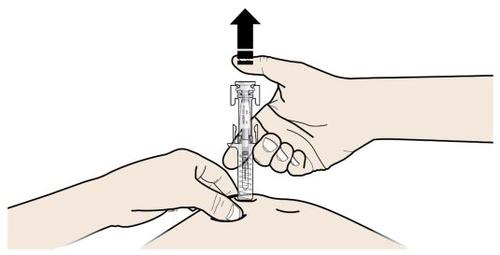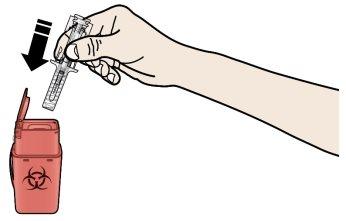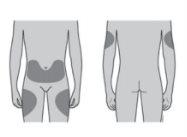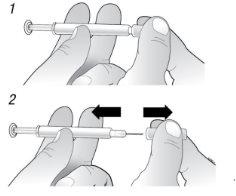

ПРОЛИА 60 мг РАСТВОР ДЛЯ ИНЪЕКЦИЙ В ПРЕДНАПОЛНЕННОМ ШПРИЦЕ

Спросите врача о рецепте на ПРОЛИА 60 мг РАСТВОР ДЛЯ ИНЪЕКЦИЙ В ПРЕДНАПОЛНЕННОМ ШПРИЦЕ

Инструкция по применению ПРОЛИА 60 мг РАСТВОР ДЛЯ ИНЪЕКЦИЙ В ПРЕДНАПОЛНЕННОМ ШПРИЦЕ
Введение
Инструкция: информация для пользователя
Пролия 60мг раствор для инъекций в предварительно заполненном шприце
деносумаб
Прочитайте внимательно всю инструкцию перед началом использования этого лекарства, поскольку она содержит важную информацию для вас.
- Сохраните эту инструкцию, поскольку вам может потребоваться перечитать ее.
- Если у вас есть какие-либо вопросы, проконсультируйтесь с вашим врачом или фармацевтом.
- Это лекарство было назначено только вам, и не передавайте его другим людям, даже если у них такие же симптомы, как у вас, поскольку оно может нанести им вред.
- Если вы испытываете побочные эффекты, проконсультируйтесь с вашим врачом или фармацевтом, даже если это побочные эффекты, которые не указаны в этой инструкции. См. раздел 4.
- Ваш врач предоставит вам карточку напоминания для пациента, содержащую важную информацию о безопасности, которую вы должны знать до и во время лечения Пролией.
Содержание инструкции
- Что такое Пролия и для чего она используется
- Что вам нужно знать перед началом использования Пролии
- Как использовать Пролию
- Возможные побочные эффекты
- Хранение Пролии
- Содержание упаковки и дополнительная информация
1. Что такое Пролия и как она работает и для чего она используется
Что такое Пролия и как она работает
Пролия содержит деносумаб, белок (моноклональное антитело), который вмешивается в действие другого белка с целью лечения потери костной массы и остеопороза. Лечение Пролией укрепляет кости и снижает риск переломов.
Кость - это живая ткань, которая постоянно обновляется. Эстрогены способствуют сохранению здоровья костей. После менопаузы уровень эстрогенов снижается, что может привести к тому, что кости станут более тонкими и хрупкими. В долгосрочной перспективе это может привести к заболеванию, называемому остеопорозом. Остеопороз также может возникнуть у мужчин по различным причинам, включая возраст и/или низкий уровень мужского гормона, тестостерона. Также это может произойти у пациентов, проходящих лечение глюкокортикоидами. Многие пациенты с остеопорозом не проявляют симптомов, хотя продолжают иметь риск переломов, особенно в позвоночнике, бедрах и запястьях.
Хирургические вмешательства или лекарства, которые останавливают производство эстрогенов или тестостерона, используемые для лечения пациентов с раком простаты или молочной железы, также могут привести к потере костной массы. Это делает кости более слабыми и склонными к переломам.
Для чего используется Пролия
Пролия используется для лечения:
- постменопаузального остеопороза у женщин и у мужчин, которые имеют повышенный риск переломов, снижая риск переломов бедер, позвоночника и в других местах.
- потери костной массы, вызванной снижением уровня гормонов (тестостерона) в результате хирургического вмешательства или лечения лекарствами у пациентов с раком простаты.
потери костной массы, вызванной длительным лечением глюкокортикоидами у пациентов, которые имеют высокий риск переломов.
2. Что вам нужно знать перед началом использования Пролии
Не используйте Пролию:
- если у вас низкий уровень кальция в крови (гипокальциемия).
- если вы аллергичны к деносумабу или любому другому компоненту этого лекарства (перечисленному в разделе 6).
Предостережения и меры предосторожности
Проконсультируйтесь с вашим врачом или фармацевтом перед началом использования Пролии.
Во время лечения Пролией вы можете desarrollать инфекцию кожи с симптомами, такими как воспаленная и покрасневшая область на коже, чаще всего на нижней части ноги, которая чувствуется горячей и чувствительной к прикосновению (целлюлит), и которая может сопровождаться лихорадкой. Сообщите вашему врачу немедленно, если вы испытываете какие-либо из этих симптомов.
Кроме того, вам необходимо принимать добавки кальция и витамина D во время лечения Пролией. Ваш врач обсудит этот вопрос с вами.
Во время лечения Пролией вы можете испытывать низкий уровень кальция в крови. Сообщите вашему врачу немедленно, если вы заметите какие-либо из следующих симптомов: судороги, мышечные спазмы или боли, и/или онемение или покалывание в пальцах рук, ног или вокруг рта, и/или судороги, спутанность сознания или потеря сознания.
В редких случаях были зарегистрированы случаи очень низкого уровня кальция в крови, которые требовали госпитализации и даже потенциально смертельных реакций. Поэтому перед введением каждой дозы и у пациентов с предрасположенностью к гипокальциемии в течение 2 недель после初альной дозы будут проверяться уровни кальция в крови (с помощью анализа крови).
Сообщите вашему врачу, если у вас есть или были тяжелые проблемы с почками, почечная недостаточность, если вам потребовалось пройти диализ или если вы принимаете лекарства, называемые глюкокортикоидами (например, преднизолон или дексаметазон), поскольку они могут увеличить риск низкого уровня кальция в крови, если вы не принимаете добавки кальция.
Проблемы в полости рта, зубах или челюсти
У пациентов, получающих Пролию для лечения остеопороза, в редких случаях (может затронуть до 1 из 1000 человек) был зарегистрирован побочный эффект, называемый остеонекрозом челюсти (ОНМ) (повреждение кости челюсти). Риск ОНМ увеличивается у пациентов, леченных в течение длительного времени (может затронуть до 1 из 200 человек, если они лечатся в течение 10 лет). ОНМ также может возникнуть после прекращения лечения. Важно попытаться предотвратить развитие ОНМ, поскольку она может быть болезненным состоянием, которое может быть трудно лечить. Чтобы снизить риск развития ОНМ, следуйте этим мерам предосторожности:
До начала лечения сообщите вашему врачу или медицинскому работнику, если:
- у вас есть проблемы в полости рта или зубах, такие как плохое состояние зубов, заболевания десен или планируемое удаление зуба.
- вы не проходите регулярные стоматологические осмотры или давно не проходили стоматологический осмотр.
- вы курите (поскольку это может увеличить риск проблем с зубами).
- вы ранее лечились бисфосфонатами (используемыми для предотвращения или лечения костных расстройств).
- вы принимаете лекарства, называемые кортикостероидами (например, преднизолон или дексаметазон).
- у вас есть рак.
Ваш врач может попросить вас пройти стоматологический осмотр перед началом лечения Пролией.
Во время лечения Пролией вы должны поддерживать хорошую гигиену полости рта и регулярно посещать стоматолога. Если вы используете зубные протезы, убедитесь, что они подходят вам правильно. Если вы проходите стоматологическое лечение или собираетесь пройти стоматологическую операцию (например, удаление зуба), сообщите вашему врачу о вашем стоматологическом лечении и сообщите вашему стоматологу, что вы проходите лечение Пролией.
Свяжитесь с вашим врачом и стоматологом немедленно, если вы испытываете какие-либо проблемы в полости рта или зубах, такие как шаткие зубы, боль или воспаление, или язвы, которые не заживают или гноятся, поскольку они могут быть симптомами ОНМ.
Необычные переломы бедра
Некоторые люди, получающие Пролию, развили необычные переломы бедра. Проконсультируйтесь с вашим врачом, если вы испытываете новый или необычный боль в бедре, паху или ноге.
Дети и подростки
Пролия не должна использоваться у детей и подростков младше 18 лет.
Использование Пролии с другими лекарствами
Сообщите вашему врачу или фармацевту, если вы принимаете, недавно принимали или можете принимать другие лекарства. Особенно важно сообщить вашему врачу, если вы проходите лечение другим лекарством, содержащим деносумаб.
Не используйте Пролию вместе с другим лекарством, содержащим деносумаб.
Беременность и лактация
Пролия не была испытана у беременных женщин. Важно сообщить вашему врачу, если вы беременны, думаете, что можете быть беременной или планируете стать беременной. Не рекомендуется использовать Пролию во время беременности. Женщины детородного возраста должны использовать эффективные методы контрацепции во время лечения Пролией и至少 5 месяцев после прекращения лечения Пролией.
Если вы становитесь беременной во время лечения Пролией или менее чем через 5 месяцев после прекращения лечения Пролией, сообщите вашему врачу.
Неизвестно, выделяется ли Пролия в грудное молоко. Важно сообщить вашему врачу, если вы кормите грудью или планируете кормить грудью. Ваш врач поможет вам решить, следует ли прекратить кормление грудью или отказаться от использования Пролии, учитывая пользу кормления грудью для ребенка и пользу Пролии для матери.
Если вы кормите грудью во время лечения Пролией, пожалуйста, сообщите вашему врачу.
Проконсультируйтесь с вашим врачом или фармацевтом перед использованием любого лекарства.
Вождение и использование машин
Влияние Пролии на способность управлять транспортными средствами и работать с машинами является незначительным или отсутствует.
Пролия содержит сорбитол
Это лекарство содержит 47 мг сорбитола на каждый мл раствора.
Пролия содержит натрий
Это лекарство содержит менее 1 ммоль натрия (23 мг) на 60 мг; это означает, что оно практически не содержит натрия.
3. Как использовать Пролию
Рекомендуемая доза - один предварительно заполненный шприц 60 мг, вводимый под кожу (подкожно) в виде одной инъекции один раз каждые 6 месяцев. Лучшие места для инъекции - верхняя часть бедер и живот. Если инъекцию делает ваш опекун (лицо, ухаживающее за вами), он также может сделать инъекцию на внешней стороне верхней части руки. Проконсультируйтесь с вашим врачом о дате следующей возможной инъекции. Каждая упаковка Пролии содержит карточку напоминания, которую можно оторвать от коробки и использовать для отслеживания даты следующей инъекции.
Кроме того, вам необходимо принимать добавки кальция и витамина D во время лечения Пролией. Ваш врач обсудит этот вопрос с вами.
Ваш врач может решить, лучше ли вам или вашему опекуну вводить Пролию. Ваш врач или медицинский работник покажет вам или вашему опекуну, как использовать Пролию. Если вы хотите получить инструкции о том, как вводить Пролию, прочитайте последний раздел этой инструкции.
Не встряхивайте.
Если вы пропустили использование Пролии
Если вы пропустили дозу Пролии, инъекцию необходимо сделать как можно скорее. Затем инъекции должны быть запланированы каждые 6 месяцев, начиная с даты последней инъекции.
Если вы прекратите лечение Пролией
Чтобы получить максимальную пользу от вашего лечения и снизить риск переломов, важно использовать Пролию в течение всего периода, который назначил ваш врач. Не прекращайте лечение без предварительной консультации с вашим врачом.
4. Возможные побочные эффекты
Как и все лекарства, Пролия может вызывать побочные эффекты, хотя не все люди их испытывают.
Пациенты, получающие Пролию, могут развить инфекции кожи (в основном целлюлит) с низкой частотой. Сообщите вашему врачу немедленно, если вы испытываете какие-либо из этих симптомов во время лечения Пролией: воспаленная и покрасневшая область на коже, чаще всего на нижней части ноги, которая чувствуется горячей и чувствительной к прикосновению, и которая может сопровождаться лихорадкой.
Редко пациенты, получающие Пролию, могут испытывать боль в полости рта и/или челюсти, воспаление или язвы, которые не заживают в полости рта или челюсти, гноящиеся раны, онемение или чувство тяжести в челюсти, или подвижность зуба. Эти симптомы могут быть признаками повреждения кости челюсти (остеонекроза). Сообщите вашему врачу и стоматологу немедленно, если вы испытываете такие симптомы во время лечения Пролией или после прекращения лечения.
Редко пациенты, получающие Пролию, могут испытывать низкий уровень кальция в крови (гипокальциемию); очень низкий уровень кальция в крови может потребовать госпитализации и даже потенциально угрожать жизни. Симптомы включают судороги, мышечные спазмы или боли, и/или онемение или покалывание в пальцах рук, ног или вокруг рта, и/или судороги, спутанность сознания или потеря сознания. Если вы испытываете любой из этих симптомов, сообщите вашему врачу немедленно. Низкий уровень кальция в крови также может вызвать изменение сердечного ритма, называемое удлинением интервала QT, которое можно обнаружить с помощью электрокардиограммы (ЭКГ).
Редко могут возникать необычные переломы бедра у пациентов, получающих Пролию. Проконсультируйтесь с вашим врачом, если вы испытываете новый или необычный боль в бедре, паху или ноге, поскольку это может быть ранним признаком возможного перелома бедра.
Редко могут возникать аллергические реакции у пациентов, получающих Пролию. Симптомы включают отек лица, губ, языка, горла или других частей тела; сыпь, зуд или крапивница на коже, свистящее дыхание или трудности с дыханием. Сообщите вашему врачу, если вы испытываете такие симптомы во время лечения Пролией.
Очень частые побочные эффекты(могут возникать у более 1 из 10 человек):
- боль в костях, суставах и/или мышцах, которая иногда может быть интенсивной,
- боль в ногах или руках (боль в конечностях).
Частые побочные эффекты(могут возникать у до 1 из 10 человек):
- болезненное мочеиспускание, частое мочеиспускание, наличие крови в моче, недержание мочи,
- инфекция верхних дыхательных путей,
- боль, онемение или покалывание, распространяющееся на нижнюю часть ноги (ишиас),
- запор,
- боли в животе,
- сыпь на коже,
- заболевание кожи с зудом, покраснением и/или сухостью (экзема),
- выпадение волос (алопеция).
Редкие побочные эффекты(могут возникать у до 1 из 100 человек):
- лихорадка, рвота и боль или дискомфорт в животе (дивертикулит),
- инфекция уха,
- сыпь на коже или язвы в полости рта (лекарственный лихеноидный пузырчатый дерматит).
Очень редкие побочные эффекты(могут возникать у до 1 из 10 000 человек):
- аллергическая реакция, которая может повредить кровеносные сосуды, в основном на коже (например, пурпурные или красно-коричневые пятна, крапивница или язвы на коже) (васкулит, вызванный гиперчувствительностью).
Частота неизвестна(не может быть оценена на основе доступных данных):
- проконсультируйтесь с вашим врачом, если у вас есть боль в ухе, ухо гноится и/или у вас есть инфекция уха. Эти симптомы могут быть признаками повреждения костей уха.
Сообщение о побочных эффектах
Если вы испытываете любой побочный эффект, проконсультируйтесь с вашим врачом или фармацевтом, даже если это побочные эффекты, которые не указаны в этой инструкции. Вы также можете сообщить о них напрямую через национальную систему уведомления, включенную в приложение V. Сообщая о побочных эффектах, вы можете способствовать предоставлению более полной информации о безопасности этого лекарства.
5. Хранение Пролии
Храните это лекарство в недоступном для детей месте.
Не используйте это лекарство после даты истечения срока годности, указанной на этикетке и упаковке после «CAD» или «EXP». Дата истечения срока годности - последний день месяца, указанного.
Храните в холодильнике (при температуре от 2 °C до 8 °C).
Не замораживайте.
Храните предварительно заполненный шприц в наружной упаковке, чтобы защитить его от света.
До инъекции предварительно заполненный шприц можно оставить вне холодильника, чтобы он достиг комнатной температуры (до 25 °C). Таким образом, инъекция будет менее болезненной. Как только шприц достигнет комнатной температуры (до 25 °C), его необходимо использовать в течение 30 дней.
Лекарства не должны выбрасываться в канализацию или мусор. Спросите вашего фармацевта, как утилизировать упаковку и лекарства, которые вам больше не нужны. Таким образом, вы поможете защитить окружающую среду.
6. Содержимое упаковки и дополнительная информация
Состав Пролии
- Активное вещество - деносумаб. Каждая предзагруженная шприц-инъектор емкостью 1 мл содержит 60 мг деносумаба (60 мг/мл).
- Другие компоненты - 글루цина кислота, гидроксид натрия, сорбитол (Е420), полисорбат 20 и вода для инъекций.
Внешний вид Пролии и содержимое упаковки
Пролия - прозрачный инъекционный раствор, бесцветный или слегка желтоватый, выпускаемый в предзагруженной шприц-инъекторе, готовом к использованию.
Каждая упаковка содержит предзагруженный шприц-инъектор с защитным колпачком.
Каждая упаковка содержит предзагруженный шприц-инъектор.
Возможно, что будут продаваться только некоторые размеры упаковок.
Владелец разрешения на маркетинг и ответственное лицо за производство
Amgen Europe B.V.
Minervum 7061,
4817 ZK Breda,
Нидерланды
Владелец разрешения на маркетинг
Amgen Europe B.V.
Minervum 7061
4817 ZK Breda
Нидерланды
Производитель
Amgen Technology (Ireland) Unlimited Company
Pottery Road
Dun Laoghaire
Co Dublin
Ирландия
Производитель
Amgen NV
Telecomlaan 5-7
1831 Diegem
Бельгия
Вы можете запросить дополнительную информацию о этом лекарстве, обратившись к местному представителю владельца разрешения на маркетинг:
Бельгия/Белгique/Бельгия s.a. Amgen n.v. Тел.: +32 (0)2 7752711 | Литва Amgen Switzerland AG Vilniaus filialas Тел.: +370 5 219 7474 |
| Люксембург/Люксбург s.a. Amgen Бельгия/Бельгия Тел.: +32 (0)2 7752711 |
Чешская Республика Amgen s.r.o. Тел.: +420 221 773 500 | Венгрия Amgen Kft. Тел.: +36 1 35 44 700 |
Дания Amgen filial af Amgen AB, Sverige Тел.: +45 39617500 | Мальта Amgen S.r.l. Италия Тел.: +39 02 6241121 |
Германия Amgen GmbH Тел.: +49 89 1490960 | Нидерланды Amgen B.V. Тел.: +31 (0)76 5732500 |
Эстония Amgen Switzerland AG Vilniaus filialas Тел.: +372 586 09553 | Норвегия Amgen AB Тел.: +47 23308000 |
Греция Amgen Ελλ?ς Φαρμακευτικá Ε.Π.Ε. Тел.: +30 210 3447000 | Австрия Amgen GmbH Тел.: +43 (0)1 50 217 |
Испания Amgen S.A. Тел.: +34 93 600 18 60 | Польша Amgen Biotechnologia Sp. z o.o. Тел.: +48 22 581 3000 |
Франция Amgen S.A.S. Тел.: +33 (0)9 69 363 363 | Португалия Amgen Biofarmacêutica, Lda. Тел.: +351 21 4220606 |
Хорватия Amgen d.o.o. Тел.: +385 (0)1 562 57 20 | Румыния Amgen România SRL Тел.: +4021 527 3000 |
Ирландия Amgen Ireland Limited Тел.: +353 1 8527400 | Словения AMGEN zdravila d.o.o. Тел.: +386 (0)1 585 1767 |
Исландия Vistor hf. Тел.: +354 535 7000 | Словакия Amgen Slovakia s.r.o. Тел.: +421 2 321 114 49 |
Италия Amgen S.r.l. Тел.: +39 02 6241121 | Финляндия Amgen AB, sivuliike Suomessa/Amgen AB, filial i Finland Тел.: +358 (0)9 54900500 |
Кипр C.A Papaellinas Ltd Тел.: +357 22741 741 | Швеция Amgen AB Тел.: +46 (0)8 6951100 |
Латвия Amgen Switzerland AG Rigas filiale Тел.: +371 257 25888 | Великобритания (Северная Ирландия) Amgen Limited Тел.: +44 (0)1223 420305 |
Дата последнего пересмотра этой инструкции:
Другие источники информации
Подробная информация о этом лекарстве доступна на сайте Европейского агентства по лекарственным средствам: http://www.ema.europa.eu/
-------------------------------------------------------------------------------------------------------------------
Инструкции по применению: | |
Руководство по компонентам | |
Перед использованием | После использования |
|
|
Важно | |
Прочитайте эту важную информацию перед использованием шприца-инъектора Пролии с автоматическим защитником иглы:
Если у вас есть сомнения, обратитесь к вашему врачу или медицинскому специалисту. | |
Шаг 1: Подготовка | |
А | Удалите упаковку шприца-инъектора из картонной упаковки и возьмите необходимые материалы для инъекции: ватные шарики с алкоголем, вату или марлю, повязку и контейнер для утилизации острых предметов (не включен). |
Для менее болезненной инъекции оставьте шприц-инъектор при комнатной температуре примерно на 30 минут перед инъекцией. Тщательно вымойте руки водой и мылом. Поместите новый шприц-инъектор и другие материалы на чистую и хорошо освещенную поверхность.
|
Б | Откройте упаковку, удалив крышку. Возьмите шприц-инъектор за защитный колпачок, чтобы удалить его из упаковки. |
| |
По соображениям безопасности:
|
В | Осмотрите лекарство и шприц-инъектор. |
| |
Неиспользуйте шприц-инъектор, если:
| |
В любом из этих случаев обратитесь к вашему врачу или медицинскому специалисту. |
Шаг 2: Подготовьтесь | |
А | Тщательно вымойте руки. Подготовьте и очистите место инъекции. |
Вы можете ввести лекарство в:
| |
Очистите место инъекции ватным шариком с алкоголем. Дайте коже высохнуть.
Избегайте введения в области с рубцами или растяжками. | |
Б | Аккуратно снимите серый колпачок с иглы, держа шприц-инъектор отдельно от вашего тела. |
|
В | Зажмите место инъекции, чтобы создать твердую поверхность. |
| |
Шаг 3: Введение | |
А | Держите кожу зажатой. ВСТАВЬТЕ иглу в кожу. |
| |
Б | НАЖМИТЕ на головку поршня с легким и постоянным давлением, пока не почувствуете или не услышите «щелчок». Полностью нажмите вниз, пока не услышите «щелчок». |
|
В | ОСТАНОВИТЕ НАЖАТИЕ на головку поршня. Затем ОТДЕЛИТЕ шприц-инъектор от кожи. |
После отпускания головки поршня защитный колпачок шприца-инъектора закроет иглу безопасно.
| |
Шаг 4: Окончание | |
А | Утилизируйте использованный шприц-инъектор и другие материалы в контейнере для утилизации острых предметов. |
Лекарства должны быть утилизированы в соответствии с местными правилами. Спросите у вашего фармацевта, как утилизировать лекарства, которые вам больше не нужны. Таким образом, вы поможете защитить окружающую среду. Держите шприц-инъектор и контейнер для острых предметов вне поля зрения и досягаемости детей.
|
Б | Осмотрите место инъекции. |
Если вы заметите кровь, нажмите на место инъекции ватным шариком или марлей. Нетрите место инъекции. Если необходимо, можно наложить повязку. |
Инструкции по введению Пролии шприца-инъектора
Этот раздел содержит информацию о том, как использовать шприц-инъектор Пролии. Важно, чтобы вы или ваш опекун (лицо, которое за вами ухаживает) не вводили инъекцию, пока не получите инструкции от вашего врача или медицинского специалиста.Всегда мойте руки перед введением инъекции. Если у вас есть сомнения о том, как ввести инъекцию, обратитесь к вашему врачу или медицинскому специалисту.
До начала
Внимательно прочитайте все инструкции перед использованием шприца-инъектора.
НЕиспользуйте шприц-инъектор, если нет колпачка иглы.
Как использовать шприц-инъектор Пролии?
Ваш врач назначил вам шприц-инъектор Пролии для введения в ткань, расположенную непосредственно под кожей (подкожно). Вы должны ввести весь содержимое (1 мл) шприца-инъектора Пролии один раз каждые 6 месяцев, согласно инструкциям вашего врача.
Материал:
Для введения инъекции вам понадобится:
- Новый шприц-инъектор Пролии;
- Ватные шарики с алкоголем или аналогичные.
Что делать перед введением инъекции Пролии
- Удалите шприц-инъектор из холодильника.
НЕберите шприц-инъектор за поршень или колпачок иглы. Это может повредить устройство.
- Шприц-инъектор можно оставить вне холодильника, чтобы он достиг комнатной температуры. Таким образом, инъекция будет менее болезненной.
НЕнагревайте его каким-либо другим способом, например, в микроволновой печи или в горячей воде.
НЕоставляйте шприц-инъектор под прямым солнечным светом.
- НЕтрясите шприц-инъектор.
- НЕснимайте колпачок иглы с шприца-инъектора до тех пор, пока не будете готовы к инъекции.
- Проверьте дату истечения срока годности на этикетке шприца-инъектора (EXP).
НЕиспользуйте его, если уже прошел последний день месяца, указанного.
- Проверьте внешний вид Пролии. Он должен быть прозрачным раствором, бесцветным или слегка желтоватым. Не вводите, если он содержит частицы или если он мутный или имеет неправильный цвет.
- Найдите чистую, удобную и хорошо освещенную поверхность и положите все необходимые материалы в пределах досягаемости.
- Тщательно вымойте руки.
Где вводить инъекцию? Лучшие места для инъекции - верхняя часть бедра и живот. Ваш опекун также может вводить вам инъекцию в внешнюю часть верхней части руки. |
|
Как вводить инъекцию?
НЕтрогайте иглу и не нажимайте на поршень.
|
|
Помните:если у вас возникли проблемы, не стесняйтесь просить помощи и совета у вашего врача или медицинского специалиста. Как утилизировать использованные шприцы-инъекторы
|

Сколько стоит ПРОЛИА 60 мг РАСТВОР ДЛЯ ИНЪЕКЦИЙ В ПРЕДНАПОЛНЕННОМ ШПРИЦЕ в Испании в 2025 году?
Средняя цена на ПРОЛИА 60 мг РАСТВОР ДЛЯ ИНЪЕКЦИЙ В ПРЕДНАПОЛНЕННОМ ШПРИЦЕ в декабрь, 2025 года составляет около 208.66 евро. Финальная стоимость может зависеть от региона, конкретной аптеки и рецептурного статуса. Для точной информации лучше проверить онлайн или в ближайшей аптеке.
- Страна регистрации
- Средняя цена в аптеках208.66 EUR
- Активное вещество
- Требуется рецептДа
- Производитель
- Информация носит справочный характер и не является медицинской рекомендацией. Перед приемом любых препаратов проконсультируйтесь с врачом. Oladoctor не несет ответственности за медицинские решения, принятые на основе этого контента.
- Аналоги ПРОЛИА 60 мг РАСТВОР ДЛЯ ИНЪЕКЦИЙ В ПРЕДНАПОЛНЕННОМ ШПРИЦЕФорма выпуска: ИНЪЕКЦИОННЫЙ РАСТВОР, 120 мгАктивное вещество: ДеносумабПроизводитель: Fresenius Kabi Deutschland GmbhТребуется рецептФорма выпуска: ИНЪЕКЦИОННЫЙ РАСТВОР, 120 мгАктивное вещество: ДеносумабПроизводитель: Fresenius Kabi Deutschland GmbhТребуется рецептФорма выпуска: ИНЪЕКЦИОННЫЙ РАСТВОР, 60 мгАктивное вещество: ДеносумабПроизводитель: Fresenius Kabi Deutschland GmbhТребуется рецепт
Аналоги ПРОЛИА 60 мг РАСТВОР ДЛЯ ИНЪЕКЦИЙ В ПРЕДНАПОЛНЕННОМ ШПРИЦЕ в других странах
Лучшие аналоги с тем же действующим веществом и терапевтическим эффектом.
Аналог ПРОЛИА 60 мг РАСТВОР ДЛЯ ИНЪЕКЦИЙ В ПРЕДНАПОЛНЕННОМ ШПРИЦЕ в Украина
Аналог ПРОЛИА 60 мг РАСТВОР ДЛЯ ИНЪЕКЦИЙ В ПРЕДНАПОЛНЕННОМ ШПРИЦЕ в Польша
Врачи онлайн по ПРОЛИА 60 мг РАСТВОР ДЛЯ ИНЪЕКЦИЙ В ПРЕДНАПОЛНЕННОМ ШПРИЦЕ
Консультация по дозировке, побочным эффектам, взаимодействиям, противопоказаниям и продлению рецепта на ПРОЛИА 60 мг РАСТВОР ДЛЯ ИНЪЕКЦИЙ В ПРЕДНАПОЛНЕННОМ ШПРИЦЕ – по решению врача и с учетом местных правил.





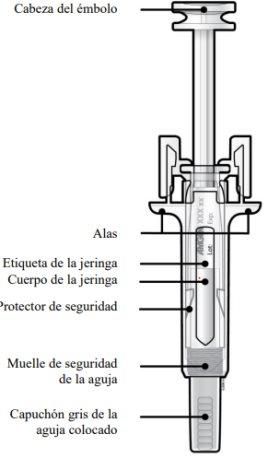

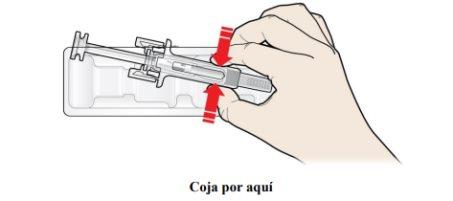
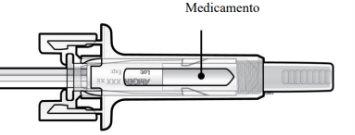
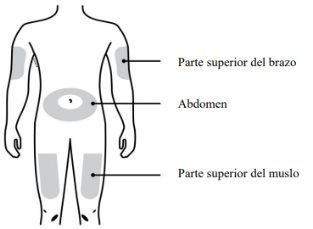
 Невводите в области, где кожа чувствительна, синяя, красная или имеет уплотнения.
Невводите в области, где кожа чувствительна, синяя, красная или имеет уплотнения.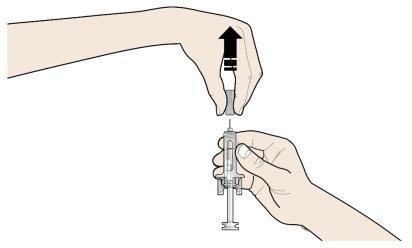
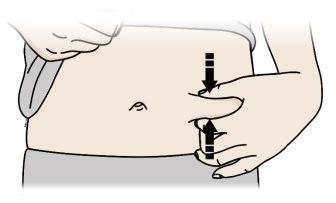
 Важно держать кожу зажатой при введении.
Важно держать кожу зажатой при введении.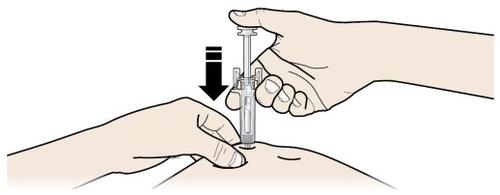
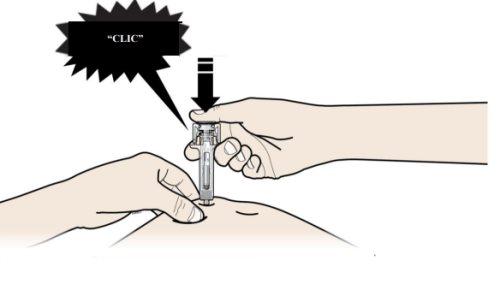
 Важно нажимать вниз, пока не услышите «щелчок», чтобы получить всю дозу.
Важно нажимать вниз, пока не услышите «щелчок», чтобы получить всю дозу.